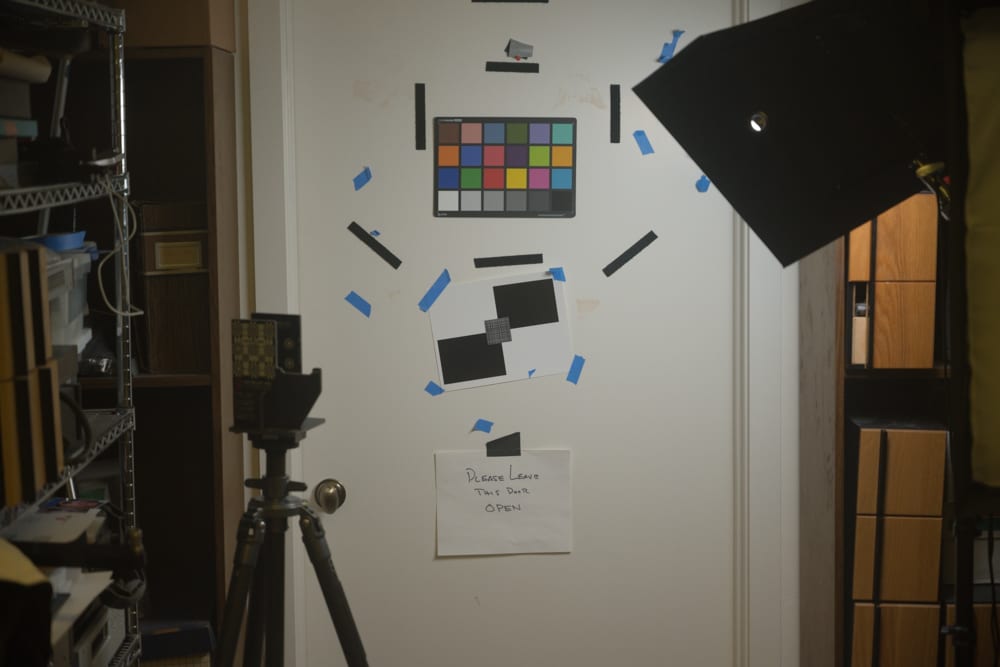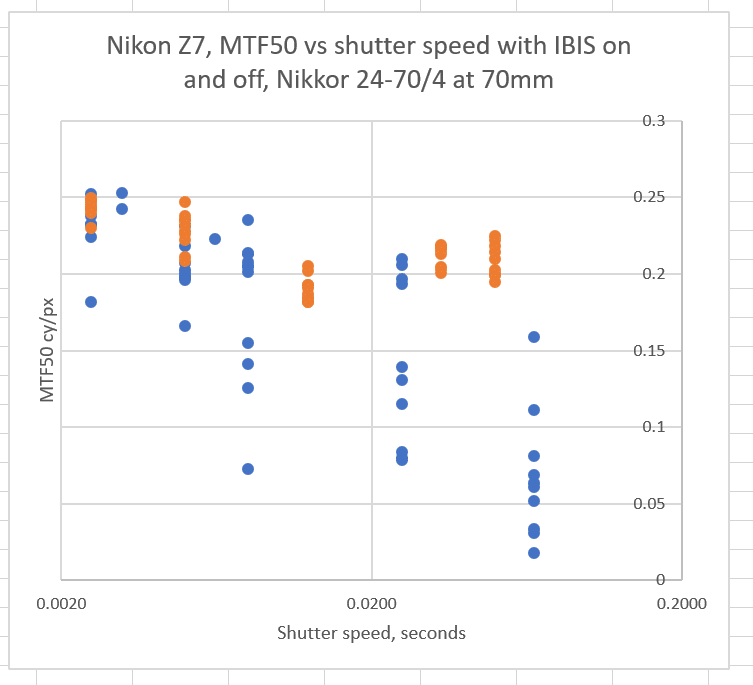This is one in a series of posts on the Nikon Z7. You should be able to find all the posts about that camera in the Category List on the right sidebar, below the Articles widget. There’s a drop-down menu there that you can use to get to all the posts in this series; just look for “Nikon Z6/7”.
This is a test that I really don’t like doing; the captures are tricky, and the processing has manual components. Here’s the protocol:
- A single Westcott 1×2 foot LED panel in a Westcott softbox.
- Nikkor S 24-70/4 set at f/4
- Heliopan variable ND filter on the lens
- ISO set to 1000, f-stop set to 4
- Focusing manually using maximum magnification wide open,
- Drive set to single
- EFCS on
- Aperture-preferred exposure mode.
- “Pete Souza” grip: left palm under base, left fingers bracing the underside of the front part of the lens, elbows against chest, and following this rifle-range release protocol: Inhale, exhale, brace gently, think calm thoughts, squeeze the shutter release, remembering to “pull through”
- Exposure protocol: ND filter to most transparent, which gets the shutter to 1/400 second, make 10 exposures. Turn the filter down a stop, repeat the exposures, until you get to about 1/20 of a second.
- Make one series with IBIS on, and one with it off.
- Develop in Lightroom CC with standard settings except for turning sharpening off and custom white balance.
- Crop and align all the crops by hand
- Export as TIFFs, analyze for horizontal edge MTF50 in Imatest.
- Export the results to Excel, crunch the stats, and graph.
And here’s a sample capture:
The results:
The orange dots are with IBIS on, and the blue dots are with it off. IBIS clearly makes the sharpness more consistent as well as increasing it. Note that the sharpest image of all, at 1/400, was with IBIS off, though. In general, I wouldn’t recommend using IBIS at shutter speeds faster than 1/1000.


Thanks for posting your methodology. I’m looking to repeat this test with the Fuji IBIS system and am looking to streamline the process. I am particularly interested in exploring how much IBIS reduces image resolution and if that effect can be measured more conclusively.
The key to the success of that test will be to obtain enough samples at high shutter speeds. IBIS will definitely help at low to moderate ones. In the Nikon, the IBIS can be turned off and the sensor locked. In the Sony a7x cameras, you can’t really turn it off. The best you can do is tell it not to try to correct for camera motion, but keep on correcting for sensor shifts due to vibration. I don’t know which camp the Fuji IBIS falls into.
Thanks. great point, and I can’t seem to find any solid information on exactly how the Fuji IBIS system operates in ‘off’ mode. But yes, ideally the sensor would lock down when IBIS is turned off, and kudos to Nikon for including that feature.